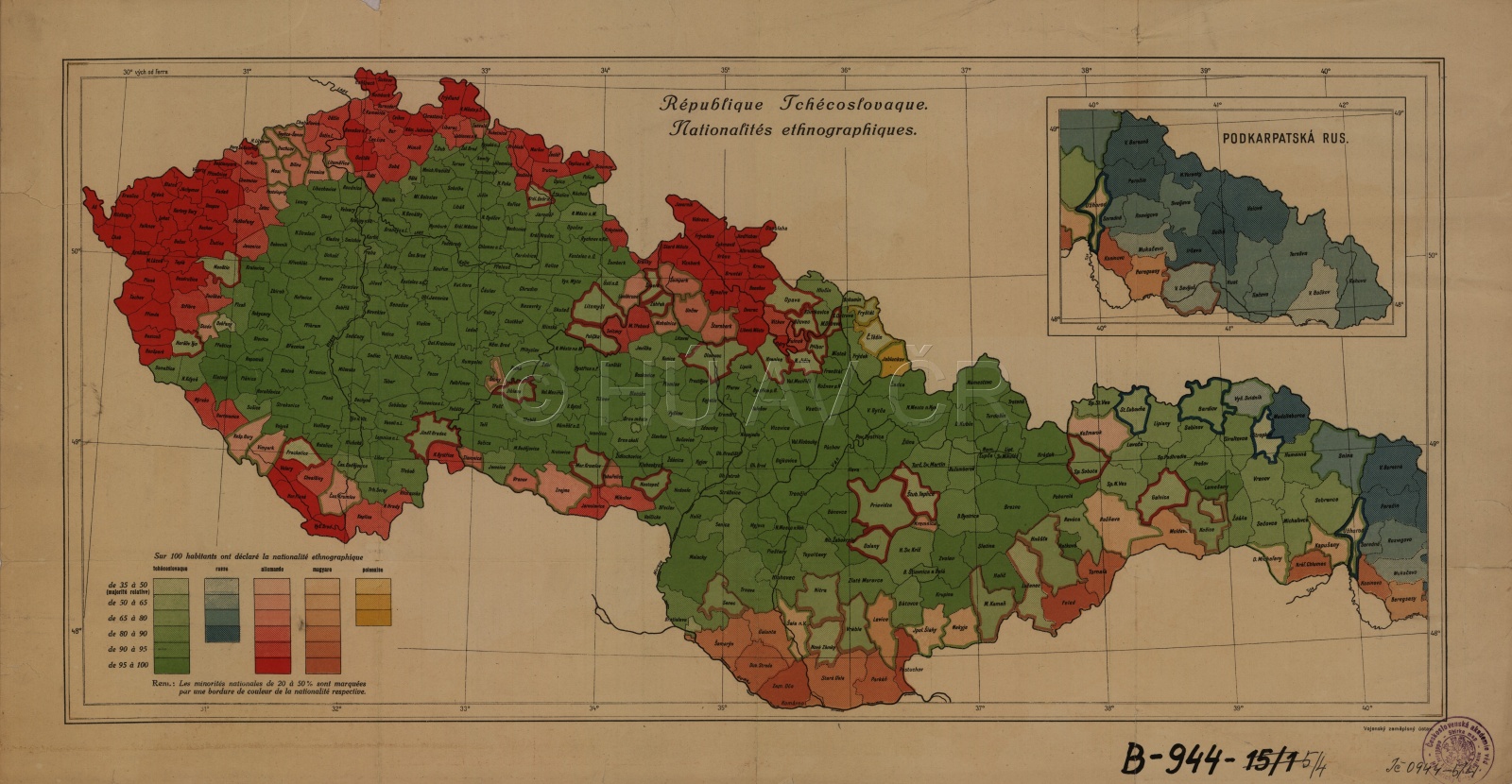Jewish settlements in Bohemia and Moravia between the 14th to 16th centuries
The oldest reference to the Jewish population in the Czech milieu comes from the early 10th century, but reliable documents are available from the end of the 11th century. The position of the Jews in society was not easy because of the hostile attitudes of the Church and the Christian population. The general opposition to the Jews intensified in the post-Hussite period. Their divergence caused hatred and disdain although there were scholars in various disciplines and good financiers among them. They had always been regarded as a marginal group of the population concentrated in special communities (ghettos).
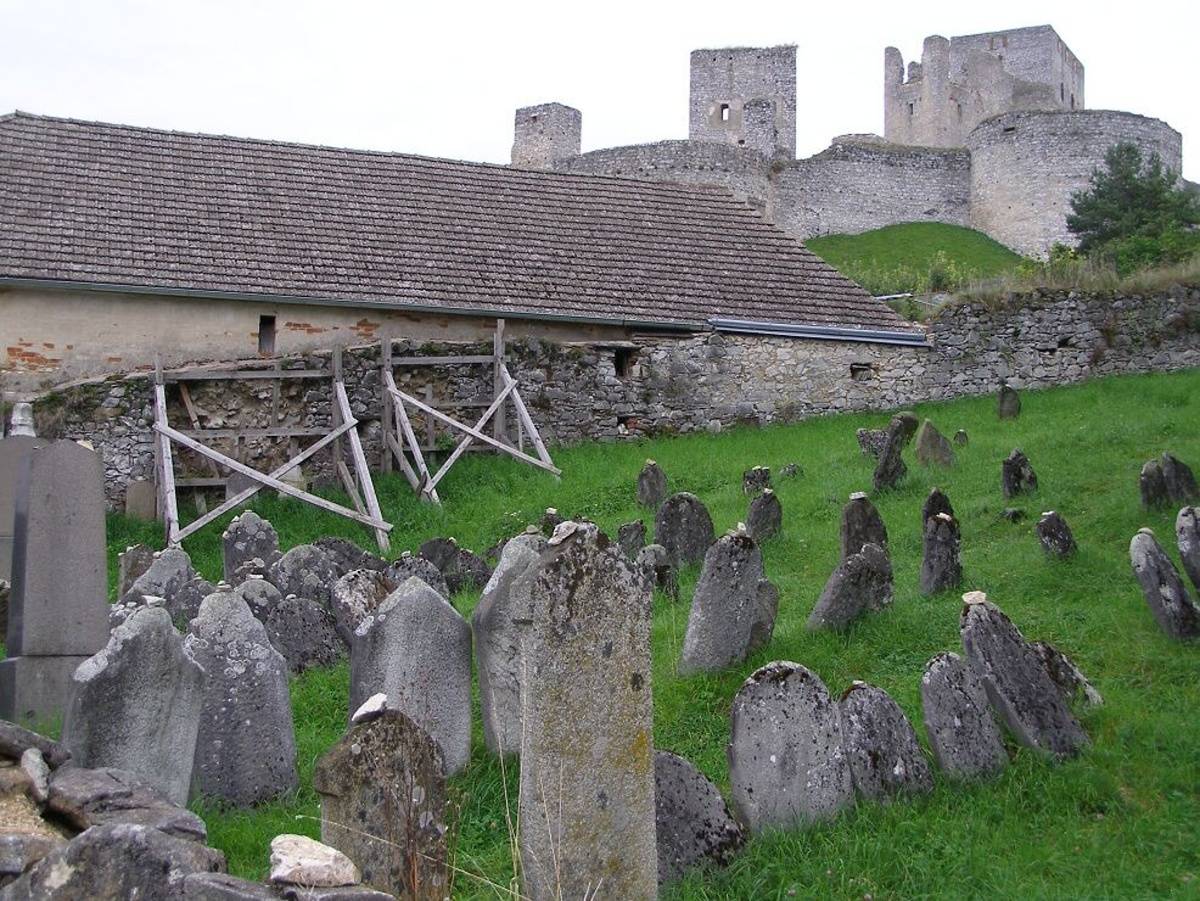
The Jewish cemetery in Rabí is situated in an unusual position at the foot of a castle hill in an immediate vicinity of the town. The Jewish community in Rabí was allegedly formed under Půta Švihovský of Rýzmberk in the late 15th century, but direct documents come from as late as the 17th century. The original synagogue next to the cemetery has survived. Photo Robert Šimůnek, 2009.

The Jewish town of Prague (Josefov) shortly before renovation – on Hurtig's plan from 1891. Alfred HURTIG, Polohopisný plán Starého města (I.), Dolejšího Nového města (II.), Josefova (V.) (1891), segment. Map Collection of the Institute of History, CAS. Display map
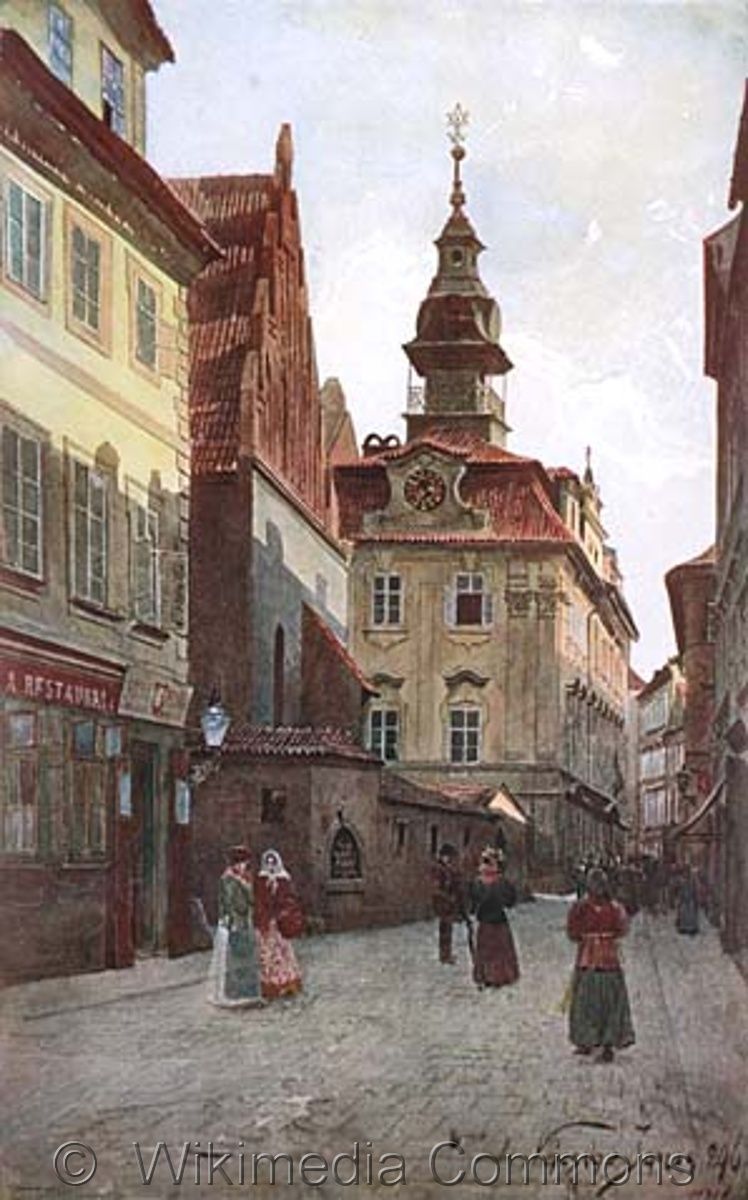
Old New Synagogue before renovation on a watercolour painting of Václav Jansa (late 19th century). Wikimedia Commons. Accessible here [verified 03/04/2020]. Club for Old Prague
References
Židé. Dějiny a kultura. [Aut.]: Sadek, V. − Šedinová, J. − Franková, A. − Pavlát, L. − Putík, A. − Fiedler, J. Praha 2001;
Chazan, R.: Židé středověkého západního křesťanského světa (1000−1500). 1. vyd., Argo, Praha 2009;
Semotanová, E. ‒ Cajthaml, J. a kol.: Akademický atlas českých dějin. Praha 2014, 2. akt. vydání 2016.

This work is licensed under a Creative Commons BY-NC-ND 4.0
Basic demographic development by the year 1800
In the Middle Ages, the population development in the Czech Lands was characterised by high birth and death rates, the death rate being heavily affected by external factors (e.g. crop failures, epidemics, wars). Favourable climatic conditions lasting until the 13th century contributed to the population of the higher grounds. However, the rapid growth of population in the 13th-14th centuries gradually turned into regression due to the cooling, exhaustion of the feudal economy, plague pandemic, and wars (Hussite Wars). The population started to grow again at the end of the 15th century. Another drop arrived in the first half of the 17th century due to the Thirty Year War and large epidemics. The overall losses of the population estimated as 30 % were relatively quickly replenished because the marriage rate and birth rate increased and the death rate was relatively favourable despite certain greater fluctuations (two plague pandemics, wars in the mid-18th century, crop failure in 1771–1772).
Population density map of Bohemia from Hickmann's Industrial-Atlas von Böhmen ( 1862). Map Collection of the Institute of History, CAS.
References
Boháč, Z.: Postup osídlení a demografický vývoj českých zemí do 15. století. Historická demografie 12, 1987, s. 59–87;
Maur, E. a kol.: Dějiny obyvatelstva českých zemí. 2. vyd. Praha 1998;
Semotanová, E. ‒ Cajthaml, J. a kol.: Akademický atlas českých dějin. Praha 2014, 2. akt. vydání 2016.

This work is licensed under a Creative Commons BY-NC-ND 4.0
Ethnic situation in Bohemia at the beginning of the 18th century according to Antonín Frozín
Antonín Frozín, a Catholic priest and Baroque nationalist conceived the foreword to the book Obroviště mariánského Atlanta (1704, translation of part of the Atlas Marianus by W. Gumpenberg) as a defence of the Czech language and nationality. Based on his findings acquired during his travels around the Kingdom of Bohemia, he opposed the contemporary notion that the Czech language was a mere minority language in the land. Frozín’s opinions on the national situation in Bohemia probably roughly reflect the reality but above all, they serve as a valuable testimony of the personal experience of a Baroque scholar and his ideas.
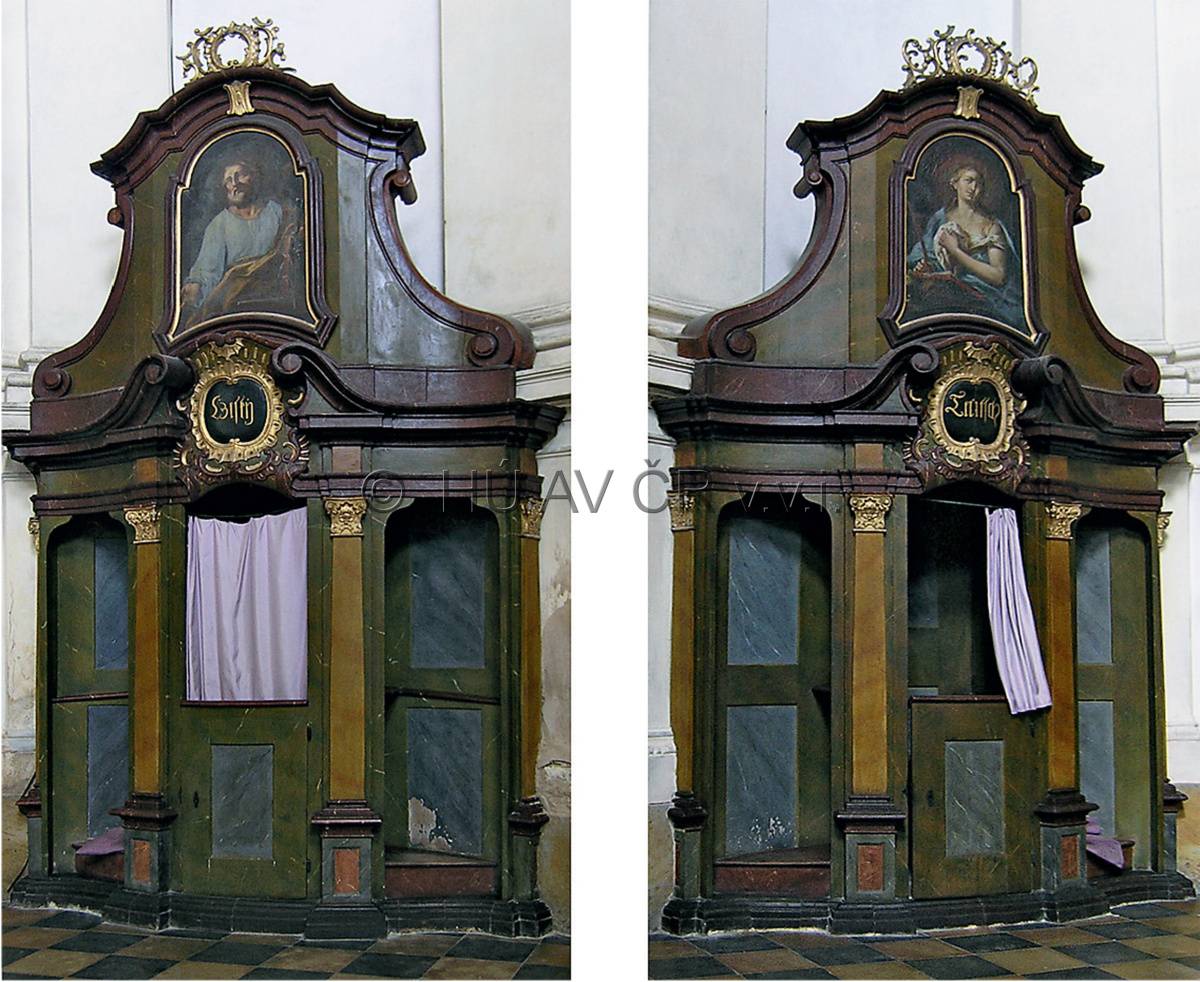
Czech' and 'German' confessional from the Church of the Assumption of Our Lady in the Augustinian Abbey of Dolní Ročov. Photo Jiří Mikulec, 2009, digital modification Kateřina Bobková-Valentová.
References
Kumpera, J.: Antonín Frozín Plzeňský a jeho obrana českého národa a jazyka, in: Minulostí Západočeského kraje 28, 1992, s. 235-267;
Semotanová, E. ‒ Cajthaml, J. a kol.: Akademický atlas českých dějin. Praha 2014, 2. akt. vydání 2016.

This work is licensed under a Creative Commons BY-NC-ND 4.0
Jewish settlements in the Czech Lands between the 16th to 19th centuries (1848)
In the early modern times, Jews in the Czech Lands remained a closed group on the edge of the society existing in the urban milieu of closed ghettos. Thanks to the king’s goodwill, the Jewish communities flourished in the second half of the 16th and first half of the 17th century. Later, however, restrictions of the Jewish population again intensified (e.g. the Familianten law, 1726). Under the rule of Joseph II, the Jews acquired hitherto unprecedented opportunities (all forms of trade and production, access to the guilds, higher education, and university education), which opened the Jewish minority a path to emancipation.

Rear Synagogue in Třebíč. Wikimedia Commons. Accessible : here [verified 03/04/2020]. Photo Z.e.o., 2007
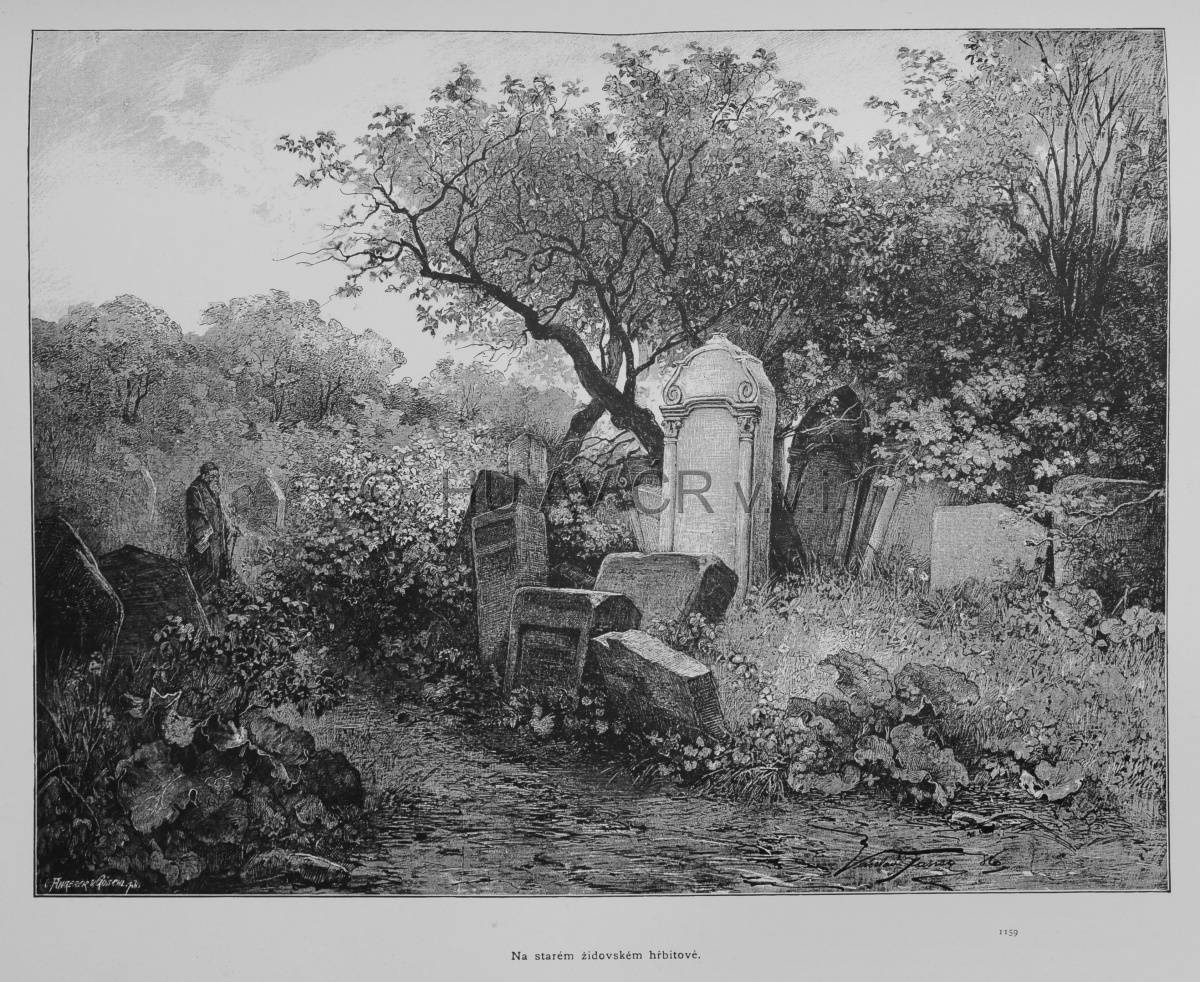
In an old Jewish cemetery (Prague), in: Ottovy Čechy III (Praha), 2nd part (1887). Library of the Institute of History, CAS.
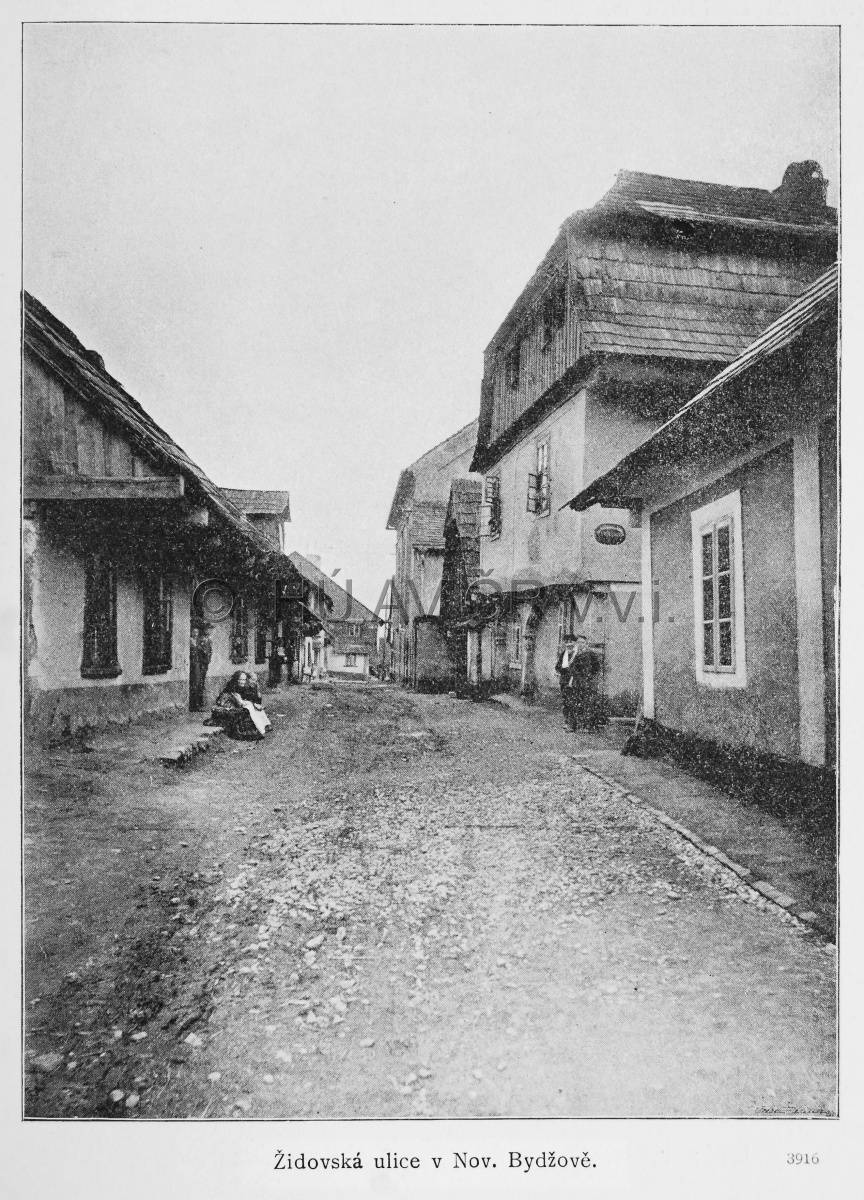
Jewish street in Nový Bydžov, in: Ottovy Čechy XIV (1908). Library of the Institute of History, CAS.
References
Orián, E.: Židovské Město pražské na vedutách, fotografiích a pohlednicích. Praha 1990;
Fišer, R. a kol.: Historický atlas měst ČR – sv. 9 Třebíč. 1. vyd. Praha 2001;
Semotanová, E. ‒ Cajthaml, J. a kol.: Akademický atlas českých dějin. Praha 2014, 2. akt. Vydání 2016;
Paulus, F. ‒ Steinová, Š. ‒ Ebelová, I. ‒ Drucker, J.: Krajina a urbanismus na rukopisných plánech z 18. století: translokační plány židovských obydlí v zemích Koruny české v letech 1727-1728 = Landscape and urbanism in manuscript plans from the 18th century : translocation plans of Jewish settlements in the Lands of the Bohemian Crown from the period of 1727-1728. Praha 2020. Weová aplikace dostupná z: https://plany.nacr.cz .

This work is licensed under a Creative Commons BY-NC-ND 4.0
Ethnic composition of the Czech Lands in the mid-19th century
For long centuries, the Czech Lands were characterized by the coexistence of the majority Czechs and minority Germans. At the end of the 18th century, the German language gained significant ground, but the advance of the Czech national movement slowed down the ethnic consequences of this situation. In fact, in the early 1860s, with the growing industrialisation and urbanisation of the Czech Lands, also the Czech milieu started to offer sufficient potentialities for social advance. Bohemia was in principle divided into ethnically German border regions and Czech interior except for the Jihlava and Svitavy language islands and the newly established Czech enclave in the west part of the north-Bohemian coal district. In Prague and České Budějovice, the German minority gradually diminished. In Moravia, strong German minorities remained in larger towns. The Czech element intensified mainly in linguistically mixed areas while the German districts kept their ethnic character. In Silesia, the German population slightly dominated the Polish and Czech minorities.
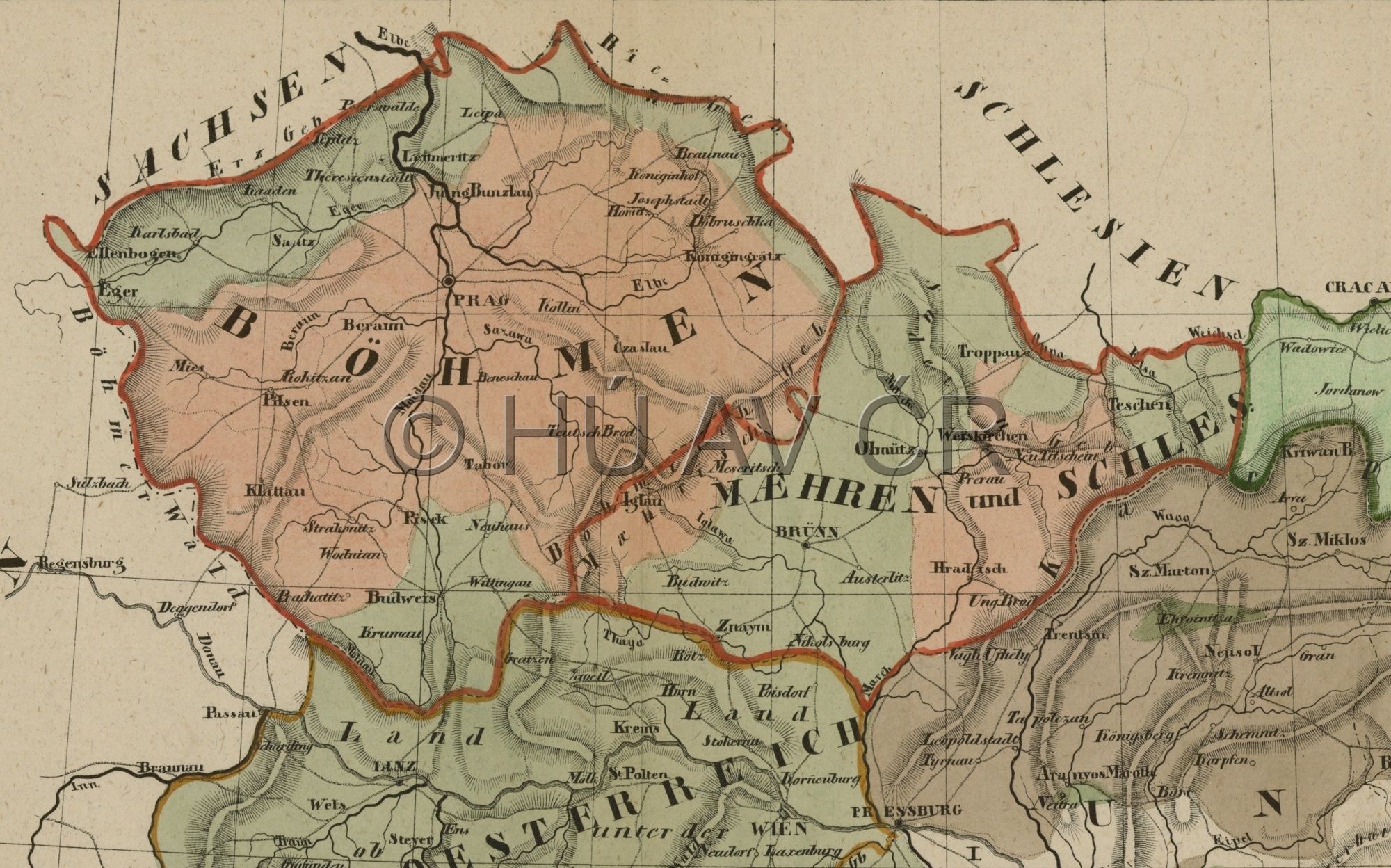
Example of an ethnic map from the German milieu – A. L. HICKMANN, Das deutsche Sprachgebiet in den Sudetenländern (1899). Map Collection of the Institute of History, CAS.

The first more accurate representation of the national structure of the population of Czech lands appears on Pavel Josef Šafařík's map, Slovanský zeměvid (1842). Map collection of the Institute of History, CAS.

Population density map of Bohemia from Hickmann's Industrial-Atlas von Böhmen (1862). Map Collection of the Institute of History, CAS.
References
Kárníková, L.: Vývoj obyvatelstva v českých zemích 1754–1914. Praha 1965;
Maur, E. a kol.: Dějiny obyvatelstva českých zemí. 2. vyd. Praha 1998;
Semotanová, E. ‒ Cajthaml, J. a kol.: Akademický atlas českých dějin. Praha 2014, 2. akt. vydání 2016;
Holubec, S. – Močičková, J.: Zobrazování česko-německé národnostní hranice na mapách v období cca 1820–1940, Historická geografie 46/2, 2020, s. 263–320;
Národnostní diverzita na mapách českých zemí - kartografický obraz a realita: http://www.hiu.cas.cz/cs/mapova-sbirka/narodnostni-mapy-ceskych-zemi.ep/.

This work is licensed under a Creative Commons BY-NC-ND 4.0

